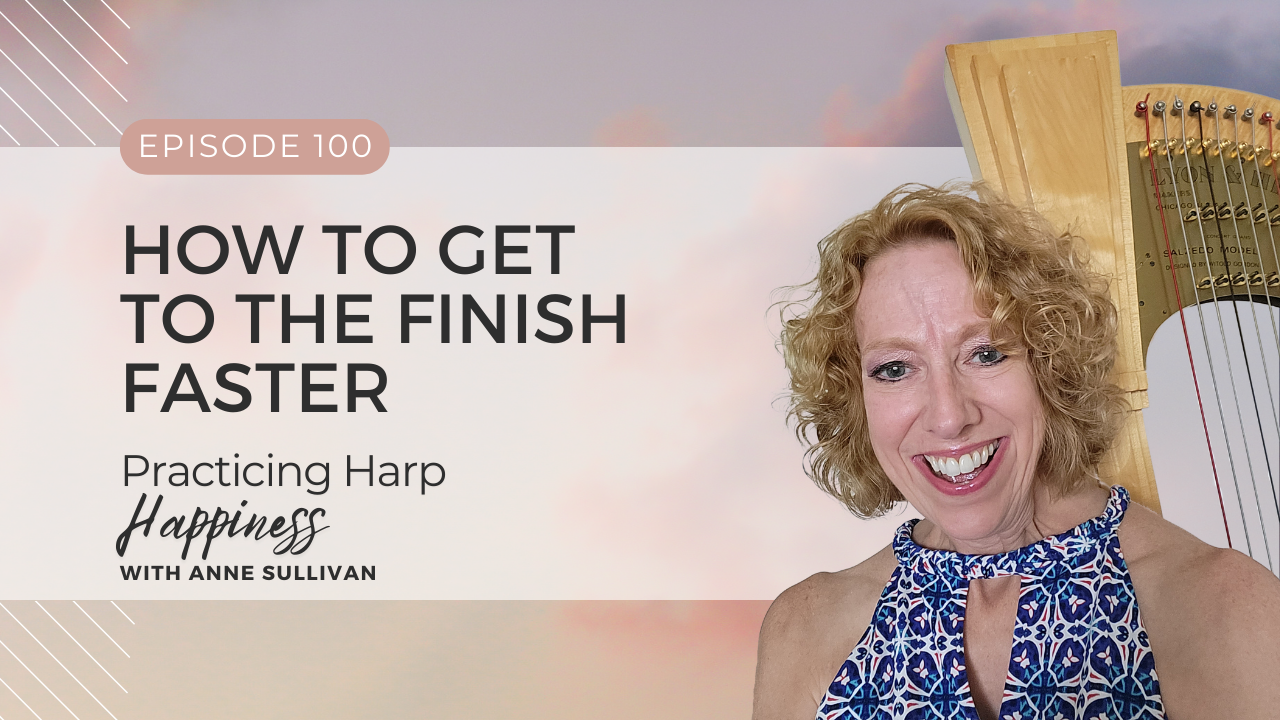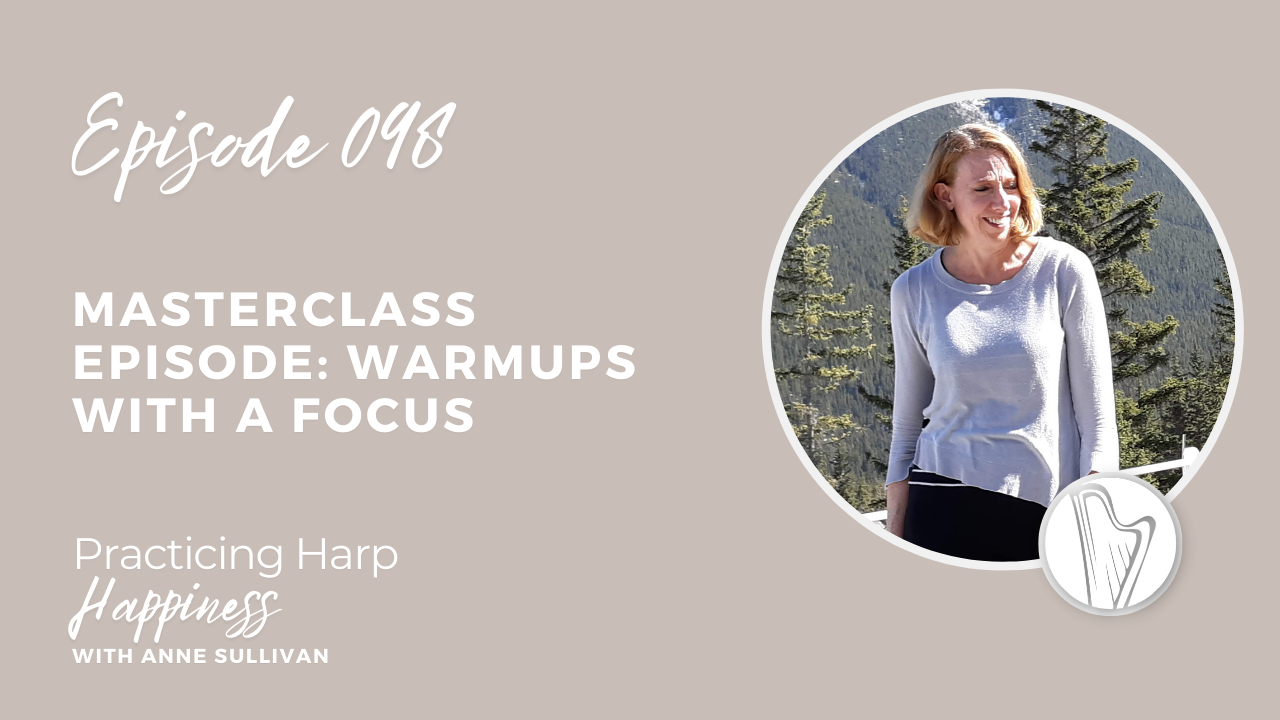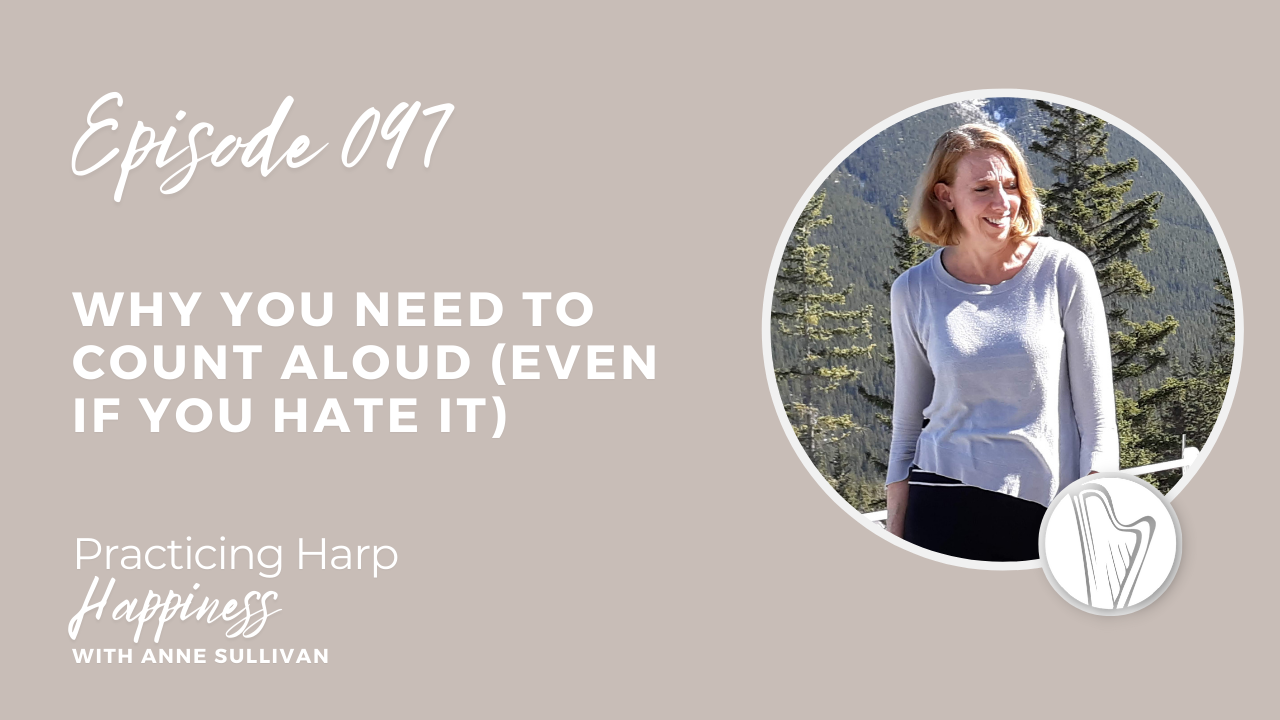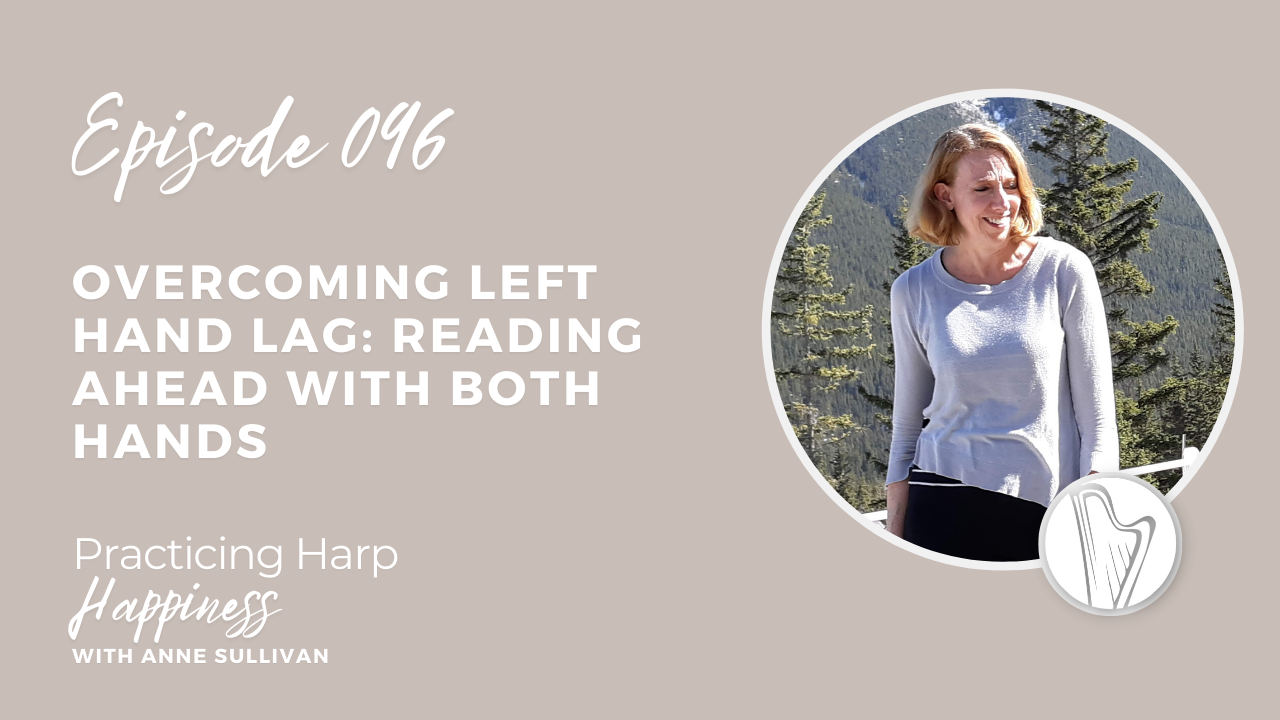Practicing Harp Happiness
#100: How to Get to the Finish Faster

Music learning isn’t a race, we all know that. That doesn’t stop us from wanting to get to the finish line, to that magical moment when our piece is “done.”
Ironically, if you ask a group of harpists exactly what “done” means or how to tell when you get there, you’ll get a few very indeterminate answers and more than a few hems and haws. Is the finish line the point when you can play the piece with no - or with very few - mistakes? Is it when you have it memorized or when you’ve played it for an audience? Is it whenever you want it to be? Is it when you’re so sick and tired of practicing it that you just want to put it away?
When I started blogging in 2012, I had a mission to spread harp happiness, to help harpists enjoy their playing and their practice, to enable them to find and keep the joy in their harp playing. In my teaching in the years just prior to that, I had begun to notice an increasing number of frustrated harpists, particularly adult students. And the biggest frust...
#099: The Shortcut Way To Build And Maintain A Repertoire

Building a repertoire sounds like something only a master harpist would need to do. Yet all of us need to have music that we can play anytime and anywhere we want. But building a repertoire sounds like a huge project. I’m going to show you today that all you need to do to build - and more importantly, to maintain a repertoire - is one pen, 3 sticky notes and 5 minutes.
Impossible? Not impossible. In fact, we’re going to take the seemingly impossible task of building a repertoire and make it simple. It’s a little like turning a black diamond ski run into the bunny slope, or turning Mt. Everest into a molehill. Okay, maybe that’s a slight exaggeration but if you’ve ever struggled with having pieces ready to play at a moment’s notice or keeping those pieces you’ve finished in your fingers, you’re going to find today’s episode is a game changer.
One of the first coaching students I worked with online, and this was years ago, came to me with the goal of developing a repertoire. She ...
#098: Masterclass Episode: Warmups With A Focus

Do you have a daily warmup that you use to start your practice? If you do, I’m sure you rely on it to help you get your fingers and your focus ready for your practice session. That’s exactly what a good warmup should do, or at least that’s one of the primary functions of a warmup.
If you’ve worked with me as a student or in my online community or even if you’ve listened to this podcast for awhile, it will come as no surprise that I have fairly specific ideas about warmups: what they should and shouldn’t do, how long they should be, what their purpose is in relation to the rest of your practice. And naturally, I want to share those ideas with you today.
Today’s episode is a masterclass episode, meaning that it’s a “play along” episode. So you will not only learn my best warmup strategies, but you will get to try them out by playing along with me as you listen. If you’re not at your harp now, that’s ok; listen now to learn my guiding principles for warming up as well as how to do th...
#097: Why You Need To Count Aloud (Even If You Hate It)

Music is not a numbers game. You can’t quantify a moving performance or a composition with statistics like a batting average. You can’t predict how many minutes, hours, weeks or months it will take to be able to play a certain piece fluently. A player's skill isn’t solely a result of how old they are or how many years they’ve been playing. Those kinds of numbers aren’t relevant in the music world.
There are numbers that have great significance to us as musicians and harpists. Some are meaningful dates in music history, like the birth and death dates of important composers. Some numbers are important for what they represent. I’m thinking of the Roman numerals we use to describe chords and chord progressions, like a I-IV-V-I progression. Other numbers are even more practical, such as numbers for fingering. And then there are those numbers that are at the heart of our discussion today, the numbers in the time signature.
You know the numbers I mean; the numbers that look like fraction...
#096: Overcoming Left Hand Lag: Reading Ahead With Both Hands

Playing hands together is a topic of constant concern and endless discussion for harpists. When should you start playing hands together? Should you learn a piece hands separately first? How do you begin putting the hands together? And the most frequently asked question: why isn’t hands together working for me? As much as we debate the other questions, this last one is the hardest of all to answer.
One of the more common problems in playing hands together is one I call the “left hand lag.” The left hand lag happens when your hands are playing together sort of, but your left hand seems to be taking too much time to find the strings it needs to play. It’s not a left hand issue; your left hand plays perfectly when it plays by itself. But when you play the hands together, your left hand seems to be behind the beat. It causes hesitations that interrupt the flow of the rhythm and slow everything down.
Your teacher’s first response is likely that you need to read ahead for your left hand...
#095: Freedom to Fly: Four Keys to Finger Facility

We all know that making music is more than playing the right notes at the right time. It’s about the heart and soul of the music, the feeling we put into it and the feeling that we communicate through it. Unfortunately, no matter how much feeling we put into the music, the actual communication of that feeling relies on our technique. It’s one of those apparent paradoxes in music study. The beauty of your music depends on the fluency of your technical performance, but a technically perfect performance may or may not be a beautiful one.
So we spend, or should be spending, a significant proportion of our practice time strengthening and securing our technical skills. We practice the notes of our pieces slowly and correctly. But often we still miss the connection between slow, technically careful playing and the facility we need to let our music flow. That connection, the missing link between slow and correct and fluid and musical, is what we will be talking about today.
Here’s the thi...
#094: 7 Skills That Mark Your Growth

If you’re into computer games, you know it’s all about getting to the next level.
Even if you’re not into computer games, you probably know what I mean. Many computer games are built in levels and moving to the next higher level requires the player to complete certain tasks or amass a specific number of treasures or experience points. Until you can complete all the tasks, find all the treasure and do it in the time allotted without using up all your game “lives” in the process, you can’t move on. You’re stuck at that level.
Lots of gamers, I might even venture to say most gamers, get a little obsessed in the attempt to move up. They play the game over and over again, looking for the secret sequence or hidden treasure that will give them access to the next level. What I find interesting about this phenomenon is that it is so similar to getting to the next level in harp playing.
I know you didn’t think you had much in common with gamers, but you might want to think again. Both are ...
#093: Learning How to Do One Thing at a Time

To paraphrase the 17h century English poet Andrew Marvell,
“Had we but world enough and time,
This scattered practice were no crime.”
Andrew Marvell was referring to “His Coy Mistress,” but we might well apply these lines to the kind of practice we so often find ourselves engaged in. It’s not that we don’t have goals or that we lack the ambition to improve and grow. It’s just that there is so much wonderful music in the world and we want to play it all. It’s a big feasting table and our eyes are bigger than our stomachs, or in this case, our collection of music we want to learn far exceeds our available time to learn it.
It wasn’t quite so difficult when we had no YouTube, no Instagram and no TikTok to bombard us with videos that make us musically hungry. Instant sheet music downloads are a threat to our practice capacity as well. When we had to leaf through a paper catalog of music and order an expensive book that may take days to arrive, we gave the purchase a little more consider...
#092: Quick Fix: Roll Your Chords Right

Welcome to a “quick fix” episode of the podcast. I love these episodes because I get to teach at the harp, which is just about my favorite thing. Actually, playing music on the harp would be my favorite, but this runs a pretty close second.
Today’s quick fix is for rolled chords. Rolled chords are one of the most distinctive sounds of the harp, and they are one of our most versatile expressive tools. They can be rolled crisply with lots of energy, or they can be lush and luxurious, almost like musical dark chocolate. But they can be tricky to play well.
We’re going to cover the three most critical factors of rolling chords on this episode: the actual technique of rolling chords, how to get them to fit into your piece and not slow down the tempo, and how to practice the rolls so your fingers sound even and smooth. That’s a lot to do in one podcast show so we had better get started. If you are by your harp you might find it helpful to try these techniques as I talk about them. If y...
#091: Harp Strings and Heart Strings: A Lesson in Romantic Music

As this podcast is released, it is the day before Valentine’s Day, and whether you celebrate the day in a special way or not, it’s hard to escape the advertisements urging us to buy and send cards, candy and flowers. I think, though, that we harpists have a special role to play, not just on Valentine’s Day, but every day.
Music, love and romance are inseparable for most of us. We have our special songs that bind us to those we love. There are certain pieces of music that tug at our hearts and move us to barely expressible joy or tears. In the words of virtuoso cellist Pablo Casals, “Music is the divine way to tell beautiful, poetic things to the heart.”
And what instrument is more appropriate than the harp to be the voice of those beautiful, poetic things? In the Bible, we read how David soothed Saul with his harp music. Folk traditions the world over associate the harp with love. In early Norse and various Celtic traditions, the harp was a symbol of love, and its strings repre...

